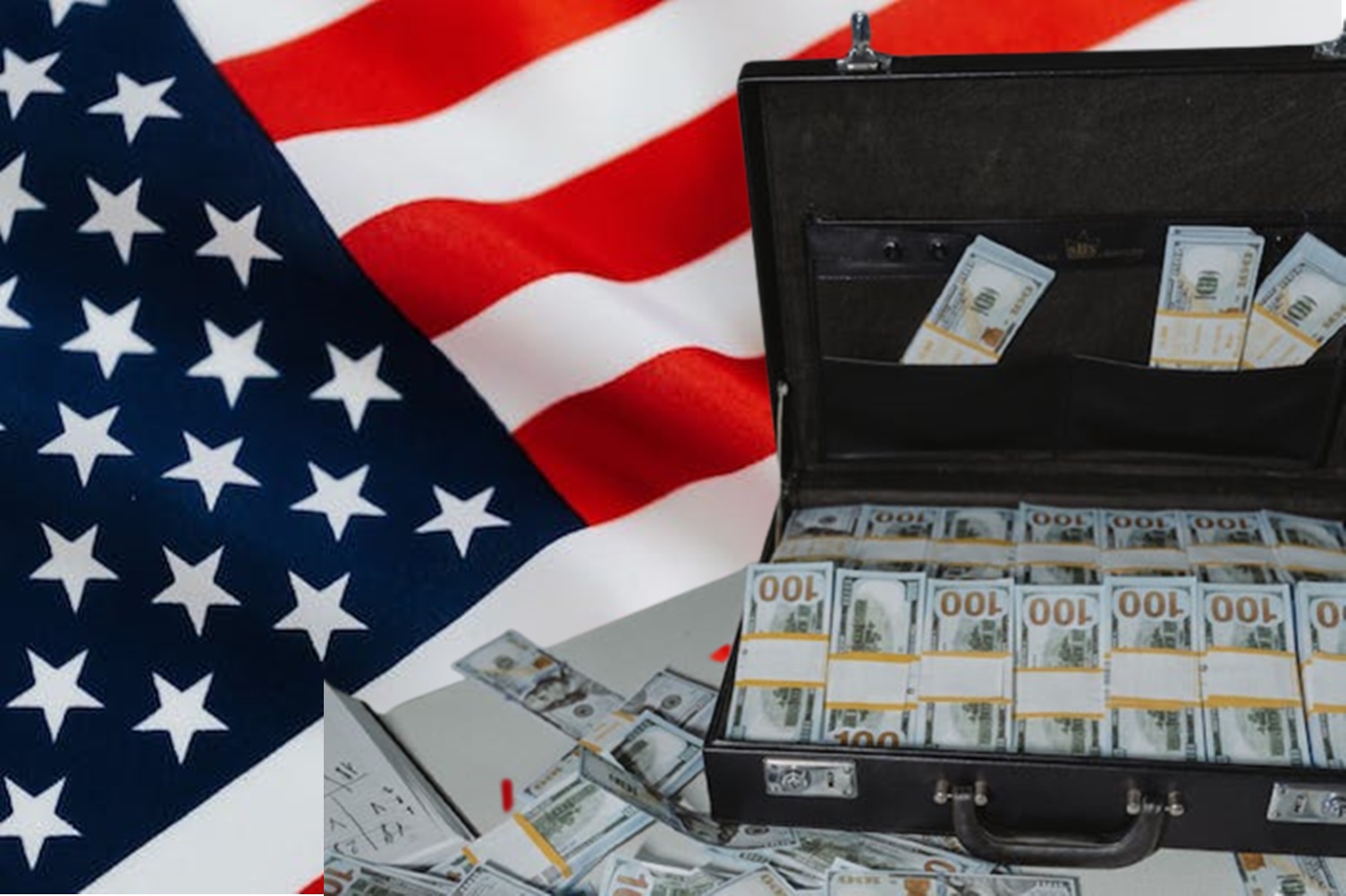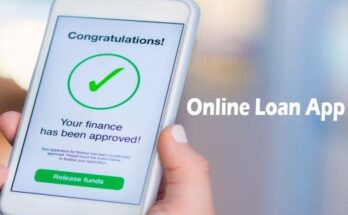Public Service Loan Forgiveness: In today’s fast-paced world, education is a ladder to success. However, this ladder often comes with a price tag: student loans.
Fortunately, for those in public service, the Public Service Loan Forgiveness (PSLF) program offers a beacon of hope.
This article aims to delve deep into the intricacies of PSLF, offering valuable insights and guidance.
Eligibility Criteria for Public Service Loan Forgiveness (PSLF)
The Public Service Loan Forgiveness (PSLF) program offers a pathway to loan forgiveness for individuals engaged in public service. To qualify, applicants must meet specific criteria, including employment type, loan type, and repayment plan. This comprehensive guide will break down these requirements to help you understand if you’re eligible for PSLF.
Types of Employment Considered for Public Service Loan Forgiveness
A key factor in determining eligibility for PSLF is the type of employment. Qualifying employment includes:
- Government Organizations: This encompasses federal, state, local, or tribal government agencies.
- Non-Profit Organizations: Employees of non-profit organizations that are tax-exempt under Section 501(c)(3) of the Internal Revenue Code.
- Full-Time Service: Applicants must work full-time, defined as at least 30 hours per week or the employer’s full-time requirement, whichever is greater.
- Specific Service Roles: Positions like public health workers, teachers, military personnel, and public interest law services are often eligible.
- AmeriCorps and Peace Corps: Volunteers in these programs are also considered for PSLF.
Loan Types Eligible Under the Public Service Loan Forgiveness Program
Not all loans are eligible for forgiveness under the PSLF program. Eligible loans include:
- Direct Federal Loans: This includes Direct Subsidized Loans, Direct Unsubsidized Loans, Direct PLUS Loans, and Direct Consolidation Loans.
- Repayment Plans: Loans should be repaid under one of the income-driven repayment plans.
- 120 Qualifying Payments: Applicants must have made 120 qualifying monthly payments while working full-time for a qualifying employer.
By meeting these criteria, public service workers can navigate towards achieving loan forgiveness. It’s crucial to ensure that you adhere to the outlined eligibility requirements to take full advantage of the PSLF program.
Application Process for Public Service Loan Forgiveness (PSLF)
Step-by-Step Guide to Apply for PSLF
Applying for Public Service Loan Forgiveness (PSLF) can be a transformative step for those in public service roles. Here’s a simplified guide to help you navigate the application process:
- Eligibility Check: Ensure you meet the PSLF program requirements. This typically involves working in a qualifying public service job and having Direct Loans or consolidating other federal student loans into a Direct Loan.
- Enrollment in a Qualified Repayment Plan: Choose from one of the income-driven repayment plans which are eligible for PSLF.
- Payment Tracking: Make 120 qualifying payments. Remember, these payments must be made while you are working for a qualifying employer.
- Form Completion: Annually, or when you change employers, fill out and submit the Employment Certification Form. This form confirms your employment in a public service role.
- Application Submission: After making your 120th qualifying payment, submit the PSLF application.
Required Documentation and Submission
Gathering the correct documentation is critical for a successful PSLF application:
- Employment Certification Forms: Completed annually or when changing jobs.
- Proof of Income: Necessary for income-driven repayment plan enrollment.
- Loan Information: Verify that your loans are eligible for PSLF.
Submission of these documents is typically done through your loan servicer’s website or by mail. It’s recommended to keep copies of all submitted documents for your records.
Common Pitfalls to Avoid
- Incorrect Repayment Plan: Ensure you’re enrolled in one of the PSLF-eligible repayment plans.
- Missing Payments: Late or partial payments are not counted as qualifying payments.
- Inaccurate Employment Certification: Regularly submit your Employment Certification Form and ensure the information is accurate.
- Not Consolidating Non-Direct Loans: Only Direct Loans are eligible for PSLF. If you have other federal student loans, consider consolidating them into a Direct Loan.
By following these steps carefully and staying aware of common mistakes, you can smoothly navigate the PSLF application process and move closer to loan forgiveness.
Understanding the Public Service Loan Forgiveness Payment Plan
This guide sheds light on the critical aspects of the program, ensuring you’re well-equipped to take advantage of its benefits.
Explanation of Qualifying Payments: At the heart of the PSLF program are qualifying payments. These are not just any loan payments, but specific ones that meet certain criteria. It’s essential to understand what constitutes a qualifying payment – from the type of loan you have to the payment plan you’re on, and even the timing and amount of each payment. Delving into these details ensures that every payment you make brings you closer to loan forgiveness.
Impact of Payment Plans on Eligibility: Not all payment plans are created equal when it comes to PSLF eligibility. Some plans might accelerate your path to forgiveness, while others could inadvertently prolong it. This section will explore which payment plans are PSLF-friendly and how your choice of plan can significantly impact your journey towards having your loan forgiven.
Strategies for Managing Payments and Staying on Track: Successfully navigating the PSLF program requires more than just making payments; it demands strategic financial management. Here, we’ll provide practical tips and strategies to help you manage your payments effectively. This includes setting reminders, keeping track of your payment count, and staying informed about any program changes. These strategies are key to ensuring you remain on the right path to loan forgiveness.
By understanding these key elements of the Public Service Loan Forgiveness program, you can make informed decisions and maximize your potential for loan forgiveness. Remember, staying informed and proactive are your best tools in this journey.
Challenges and Considerations in Public Service Loan Forgiveness (PSLF)
Common Issues Faced by Applicants
Navigating the Public Service Loan Forgiveness (PSLF) program can be complex, with applicants often encountering a range of challenges. One of the most common issues is understanding the specific eligibility requirements, such as qualifying employment and the type of loans eligible for forgiveness. Additionally, applicants frequently face difficulties in tracking and certifying their qualifying payments. Miscommunication with loan servicers and the intricacies of the program’s rules can lead to missed opportunities for loan forgiveness.
Legislative Changes and Their Impact on PSLF
The PSLF program has undergone several legislative changes that significantly impact applicants. These amendments can alter the eligibility criteria, the type of payments that qualify, and the documentation required. It’s crucial for applicants to stay informed about these changes, as they can both positively and negatively affect their loan forgiveness process. Understanding the latest legislative updates is key to maximizing the benefits of the PSLF program.
Tips for Navigating Challenges in the PSLF Process
To successfully navigate the PSLF process, it’s essential to be proactive and well-informed. Here are some tips:
- Stay Updated: Keep abreast of any changes in legislation or program rules that might affect your eligibility.
- Maintain Accurate Records: Diligently track your qualifying payments and keep detailed records of your employment during the period you’re making these payments.
- Communicate Regularly: Regularly communicate with your loan servicer to confirm that you’re on the right track for forgiveness.
- Seek Guidance: Don’t hesitate to seek advice from financial experts familiar with the PSLF program. They can provide valuable insights and help you avoid common pitfalls.
- Utilize Resources: Make use of available online resources and official PSLF documentation to ensure you’re following the correct procedures and meeting all necessary criteria.
By understanding the challenges and staying informed about legislative changes, applicants can better navigate the complexities of the PSLF process and increase their chances of successfully achieving loan forgiveness.
Alternative Options and Supplementary Programs to PSLF
When considering student loan forgiveness, the Public Service Loan Forgiveness (PSLF) program is often the first that comes to mind. However, there are several alternative options and supplementary programs available that can provide significant benefits. Understanding these alternatives is crucial for borrowers who may not qualify for PSLF or are looking for additional assistance.
Teacher Loan Forgiveness Program: Specifically designed for educators, this program offers forgiveness for teachers working in low-income schools. It’s a viable option for those dedicated to teaching, providing forgiveness after a shorter period compared to PSLF.
Income-Driven Repayment (IDR) Plan Forgiveness: Under IDR plans, loans are forgiven after 20-25 years of qualifying payments. This option is ideal for borrowers with a high debt-to-income ratio, offering a feasible path to forgiveness, especially for those not in public service roles.
Military Student Loan Forgiveness Programs: Serving in the U.S. Armed Forces can qualify individuals for unique loan forgiveness opportunities. These programs are a way to honor military service while alleviating educational debts.
State-Sponsored Loan Repayment Assistance Programs (LRAPs): Many states offer LRAPs for professionals in fields like healthcare, law, and education. These programs are tailored to meet the specific needs of professionals in underserved areas.
National Health Service Corps Loan Repayment Program: Health professionals working in high-need communities can benefit from this program. It’s an excellent alternative for medical professionals seeking loan relief.
Volunteer Organization Programs: Organizations like AmeriCorps and Peace Corps offer loan assistance for volunteers. This can be a fulfilling way to receive loan forgiveness while contributing to important causes.
These programs can complement or serve as alternatives to PSLF, addressing the diverse needs and career paths of borrowers. It’s essential to research each program thoroughly to understand eligibility requirements and benefits, ensuring the best fit for your financial and professional goals.
Future of Public Service Loan Forgiveness (PSLF): Trends and Expert Predictions
This article delves into the current trends and potential future changes in the PSLF program, offering insights from experts in the field.
Current Trends in PSLF:
- Increased Participation: There’s a noticeable uptick in the number of applicants for the PSLF program. This surge is attributed to greater awareness and improved accessibility.
- Policy Revisions: Recent changes in government policies have made the PSLF program more inclusive and flexible, allowing a wider range of professions to qualify.
- Technology Integration: The adoption of digital platforms for application and tracking has streamlined the process, making it more user-friendly.
Future Changes and Predictions:
- Expansion of Eligible Professions: Experts anticipate an expansion in the list of professions qualifying for PSLF, potentially including roles in emerging sectors.
- Policy Enhancements: Predictions suggest that future policies might offer greater forgiveness benefits or shorter qualification periods, driven by evolving educational finance landscapes.
- Increased Funding: There’s a possibility of increased funding for the PSLF program, reflecting a growing emphasis on supporting public service professionals.
Expert Opinions:
- Economic Impact: Financial experts argue that an enhanced PSLF program could positively influence the economy by alleviating student debt burdens.
- Social Implications: Educational experts emphasize the potential social benefits, noting that an improved PSLF could attract more individuals to public service roles.
- Technological Advancements: Technology specialists predict further digital innovations in managing the PSLF program, making it more efficient and accessible.
The future of the Public Service Loan Forgiveness program is poised for significant evolution. With expert insights pointing towards broader inclusivity, enhanced policies, and technological advancements, the PSLF program stands as a beacon of hope for those in public service roles, striving to alleviate the burden of student loans.
FAQs on Public Service Loan Forgiveness (PSLF)
What is Public Service Loan Forgiveness (PSLF)?
Public Service Loan Forgiveness (PSLF) is a federal program designed to forgive student loan debt for employees in public service careers after they have made 120 qualifying monthly payments under a qualifying repayment plan.
Who is eligible for PSLF?
To be eligible for PSLF, you must be employed by a U.S. federal, state, local, or tribal government or not-for-profit organization, work full-time, and have direct loans or consolidate other federal student loans into a Direct Loan.
Do all federal loans qualify for PSLF?
No, only Direct Loans are eligible for PSLF. Other types of federal loans, such as FFEL or Perkins Loans, must be consolidated into a Direct Consolidation Loan to qualify.
What payment plans qualify for PSLF?
Qualifying repayment plans include all four income-driven repayment plans: Income-Based Repayment (IBR), Pay As You Earn (PAYE), Revised Pay As You Earn (REPAYE), and Income-Contingent Repayment (ICR).
How do I apply for PSLF?
You can apply for PSLF after making 120 qualifying payments. You must submit the PSLF application and employment certification form, proving that you’ve worked for a qualifying employer during the required payment period.
Conclusion
In conclusion, the PSLF program offers a significant opportunity for those dedicated to public service to alleviate their student loan burden. However, navigating the specifics can be challenging. Stay informed, keep meticulous records, and consider consulting a financial advisor.
Above all, keep up with any changes in the program to ensure your efforts align with its requirements. The journey to loan forgiveness under PSLF is a marathon, not a sprint. Patience and attention to detail will be your best allies in successfully achieving loan forgiveness.


